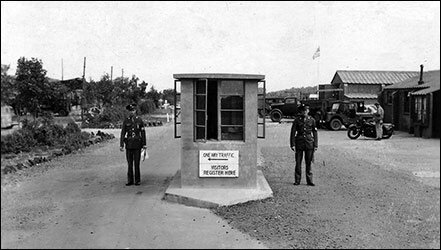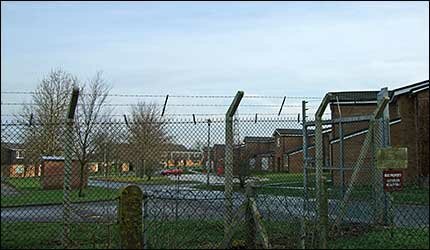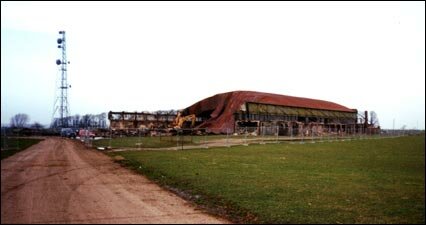|
|
|||||||||
|
Based on the book 'John Burn OneZeroFive', written by William “Bill” Donald. |
|||||||||
|
Chelveston Airfield
|
|||||||||
|
|||||||||
|
The Airfield: was constructed in winter 1940/41, as an RAF station, one of fifteen added to the county during WWII. A hill-top was removed during construction works and rubble from bomb damage in London was brought and used as hardcore for the foundations. Three 50-yard wide runways were laid and the main one was extended from 1400 yards to 2000 by 1942. Three hangars, a control tower and two brick crash/fire crew sheds with asbestos roofs were constructed on the site, as well as huts for airmen’s accommodation. At first this was an RAF training centre and Central Gunnery School, and was also used for glider experiments. Wellington and Hampden bombers from Bomber Command did gunnery practice from the airfield, often flying over Rushden. Women’s Auxillary Air Force (WAAF) quarters were built in Church Lane,Yelden but were not used until the Americans came. The American Eighth Air Force came in 1942 with the 60th Troop Carrier Group but they left after 6 months and the 301st Bombardment Group followed and then the 12th Bombardment Group. Then came the heavy 305th Bombardment Group who brought the B17 Flying Fortress planes. The building prepared for WAAF was used as their mess hall. The title of Bill’s book, 'John Burn OneZeroFive', was the radio call sign for the 305th USAF Bomb Group who were based at Chelveston from 1942. Over 8000 Americans passed through Chelveston during WWII. The airfield, together with those at Podington & Thurleigh, was home to the First Bombardment Wing (later the 40th Combat Wing) of the 1st Air Division of the 8th United States Air Force. The 305th Bomb Group arrived in December 1942. Radio call signs were now being standardised and the control tower was called John Burn, the one-zero-five being the RAF Station number. The first wartime mission from there was in December 1942; a diversionary flight. Colonel Macdonald won a Silver Star (3rd highest honour) for leadership. He also led the largest operations mission to Gdynia for which he was awarded the Cluster which is the equivalent of the British Bar. Captain Bruce Bairnsfather was the camp’s artist and was noted for the pictures he painted, as identification, on the aircraft based there, “Old Bill” being the most noted. He also did some murals in the staff community rooms at the Base and he painted a wall in the Conservative Club at Rushden. Social: Free time was spent in the locality, often at the public houses; the Star & Garter in Chelveston, the Swan at Newton Bromswold, the Chequers at Yelden, as well as those in Rushden. Several romances ensued with local girls and marriages followed. These 'G.I Brides' left for a new life in America, but some did not settle to the different way of life and returned. Tragedies: On the 15th of November 1943 two B17’s crashed, after a training flight, over Newton Bromswold parish and both crews were killed. The following March on the 24th, another B17 crashed after take-off and killed the crew, eight RAF men billeted in Yelden and two sleeping children at Glebe Farm. Then on the 15th February 1945 a plane hit a tree and crashed near High Hayden at Rushden and another from the same mission crashed near Newton Bromswold. During hostilities over 769 lives were lost and a memorial to them is on the wall of the church that stands between the two villages of Chelveston cum Caldecott.
After the 60th anniversary of the end of WWII when some of the veterans came back for a visit, a fund was started to erect a new memorial to the '305th', and this was dedicated on the 27th May 2007. It stands on the grass road-side verge next to the Star & Garter public house.
|
|||||||||




